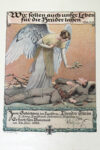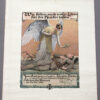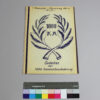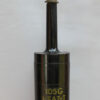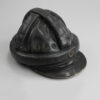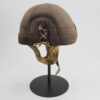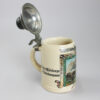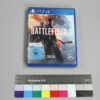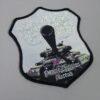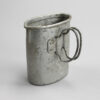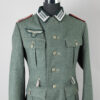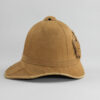Memorial sheet for relatives of fallen soldiers
Inventory number: DPM 6.29
The lithograph shows an angel bending forward with one hand on his chest to lay an oak branch on a fallen soldier. The latter, however, lies there with a hand on his heart, seemingly unharmed and as if asleep. The landscape of the painting also has nothing to do with real death in the trenches of the First World War: The soldier lies alone in green grass, with only the thorny vines in the background reminiscent of barbed wire.
In January 1915, Kaiser Wilhelm II commissioned the “Memorial sheet for the relatives of our fallen heroes” and added a Bible verse from the Gospel of John to the design by the artist Emil Doepler. The full line reads: “By this we have known love, that He laid down His life for us; and we also ought to lay down our lives for the brethren.” Emil Doepler was a graphic artist and was known for his illustrations of the Germanic gods in Art Nouveau style. He also designed flags and coats of arms and worked as a professor at the Kunstgewerbemuseum teaching institute in Berlin.
After the death of a soldier, the memorial sheet was sent or given to his wife or parents. The replacement battalion of the deceased’s regiment was responsible for finding the addresses and sending them out. The memorial leaflet was intended to show the bereaved the recognition of the fatherland and remained in place until the end of the war. The soldier’s name, date of death and unit were entered by hand. However, in view of the mass deaths during the First World War, relatives rarely received their sheets promptly; this one was only awarded to the man’s widow nine months after his death.
Object of the month
(short) stories from the depot
Unfortunately, many objects cannot currently be shown in the exhibition for conservation reasons. Here you will find unusual objects and exciting stories of special pieces from the depot

